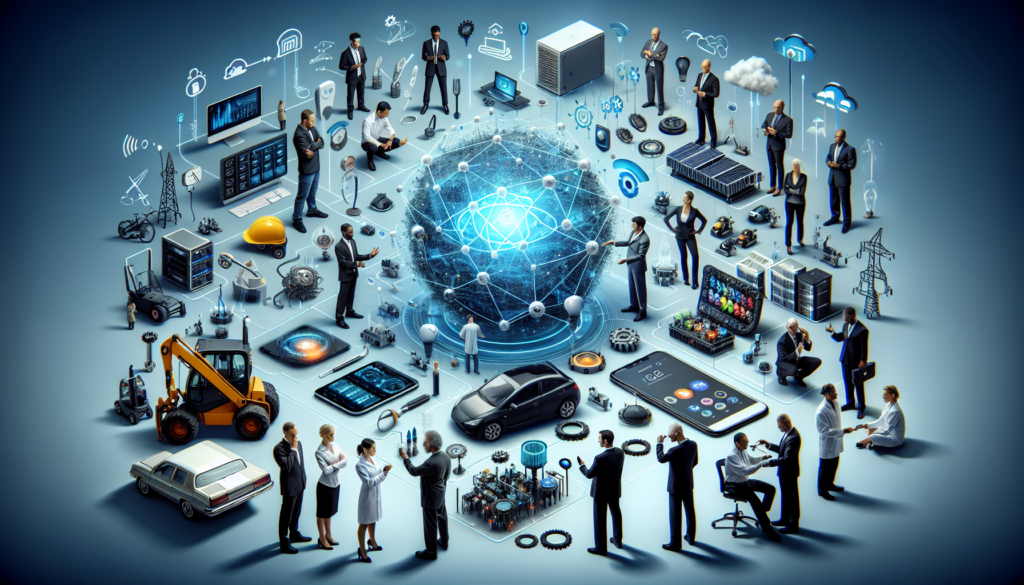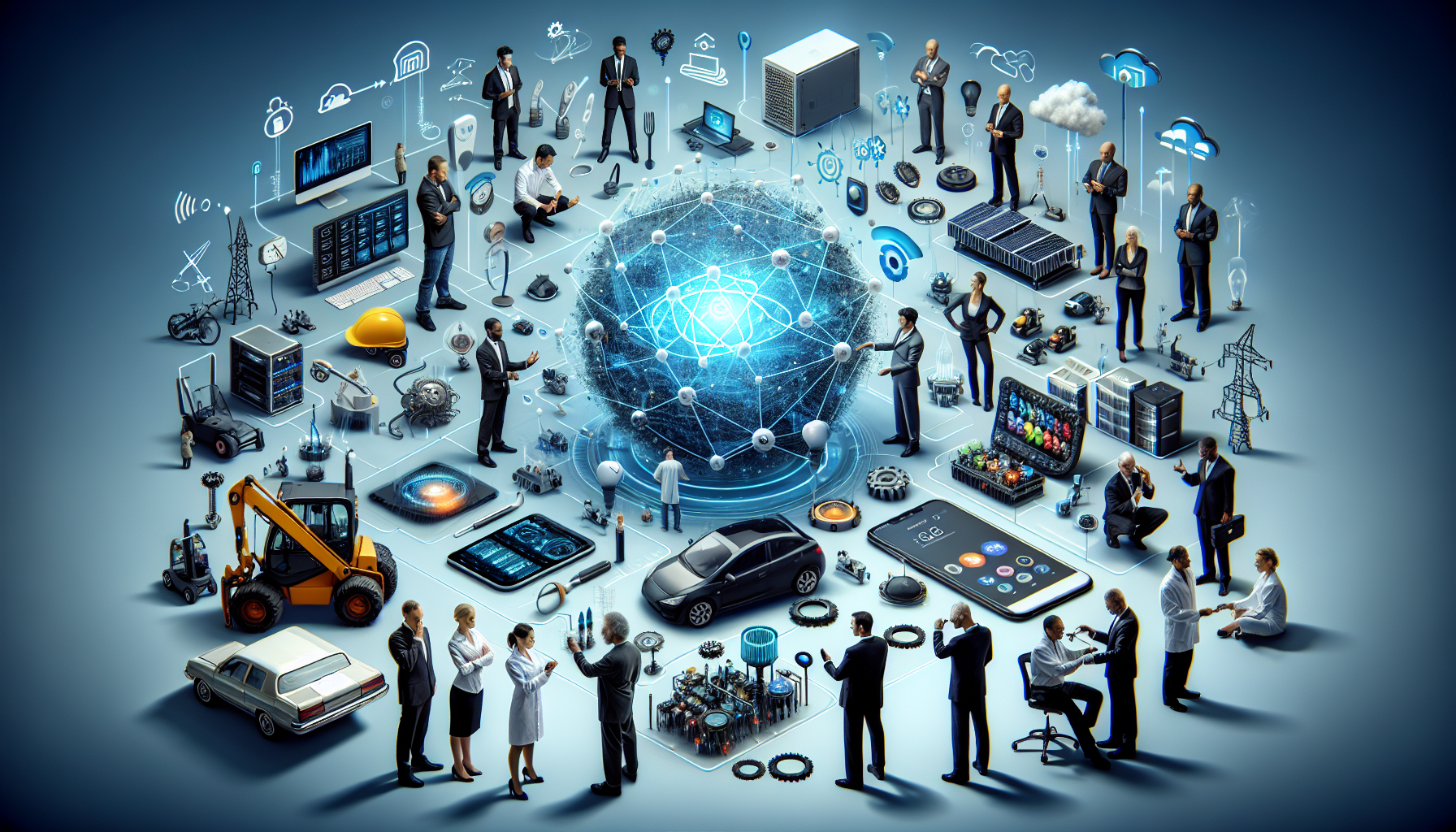IoE, in engineering, refers to the innovative concept of the Internet of Everything. This ingenious technological framework connects machines, objects, and people, enabling a seamless exchange of data and information. By integrating and interconnecting various devices and systems, IoE powers the Fourth Industrial Revolution, promising immense advancements in automation, communication, and efficiency. So, whether you’re an aspiring engineer or simply an enthusiast, understanding the acronym IoE is crucial in today’s rapidly evolving technological landscape.
What Does IoE Stand For In Engineering?

Definition of IoE
In the field of engineering, IoE stands for the Internet of Everything. It is a concept that refers to the connectivity of devices, systems, and people in order to create a network of intelligent and interactive objects. The IoE encompasses the Internet of Things (IoT), which focuses on connecting physical objects, and adds the layer of intelligence and interactivity to create a more comprehensive and integrated network.
IoE in the Context of Engineering
In the context of engineering, IoE represents a paradigm shift in the way we design, build, and operate systems. It brings together various technologies such as IoT, big data analytics, cloud computing, artificial intelligence (AI), and cybersecurity to revolutionize the engineering landscape. By connecting devices, sensors, and machines, IoE enables engineers to collect data in real-time, analyze it, and make informed decisions to optimize processes, enhance efficiency, and improve overall performance.
The Evolution of IoE in Engineering
The concept of IoE has been evolving over the years as advancements in technology continue to unfold. It started with the Internet of Things, where devices and objects started to connect and communicate with each other. However, with the integration of intelligent systems and the ability to analyze vast amounts of data, IoE has taken engineering to new heights.
Engineers now have the capability to collect real-time data from sensors embedded in devices and systems, and leverage advanced analytics and AI algorithms to gain insights and make valuable predictions. This evolution has opened up new possibilities in various industries and has paved the way for groundbreaking innovations.
Key Technologies and Concepts in IoE
1. Internet of Things (IoT)
IoT forms the foundation of IoE. It involves the connection of physical devices, sensors, and objects to the internet, enabling them to collect and exchange data. This connectivity allows engineers to gather real-time information from various sources and utilize it for optimization and decision-making.
2. Big Data Analytics
With the abundance of data generated by connected devices in IoE, big data analytics plays a crucial role in extracting valuable insights. By analyzing large datasets, engineers can identify trends, patterns, and correlations that can be leveraged to improve efficiency and performance.
3. Cloud Computing
Cloud computing provides the necessary infrastructure to process and store massive amounts of data generated by IoE devices. It also enables engineers to access and analyze this data from anywhere, facilitating real-time monitoring and decision-making.
4. Artificial Intelligence (AI)
AI technologies, such as Machine Learning and Neural Networks, enable intelligent systems in IoE to learn and adapt from data. This allows engineers to create predictive models, automate processes, and make accurate decisions based on historical and real-time data.
5. Cybersecurity
As IoE connects numerous devices, networks, and systems, cybersecurity becomes a crucial aspect to protect against potential threats and vulnerabilities. Ensuring the integrity, confidentiality, and availability of data is essential to maintain the robustness and reliability of IoE systems.

Applications of IoE in Engineering
1. Smart Cities and Infrastructure
IoE has the potential to transform cities and infrastructure by creating smart environments that enhance the quality of life for residents. By integrating various systems like transportation, energy, and utilities, engineers can improve efficiency, reduce energy consumption, and enhance overall infrastructure management.
2. Industrial Automation and Manufacturing
IoE enables engineers to streamline operations and enhance productivity in manufacturing and industrial sectors. By connecting machines, production lines, and supply chains, engineers can optimize processes, monitor equipment health, and reduce downtime, leading to increased efficiency and cost savings.
3. Transportation and Logistics
The integration of IoE technologies in transportation and logistics can revolutionize the way goods are transported and managed. Real-time tracking of vehicles, intelligent routing, and predictive maintenance can minimize delays, enhance safety, and optimize logistics operations.
4. Healthcare and Medical Technology
In the healthcare sector, IoE can improve patient care, enable remote monitoring, and enhance the efficiency of medical processes. Connected devices and sensors can collect and transmit patient data, allowing doctors and healthcare professionals to make accurate diagnoses, provide personalized treatments, and improve overall healthcare outcomes.
5. Energy and Utilities
IoE plays a significant role in optimizing energy management and utility systems. By integrating smart grids, sensors, and real-time data analytics, engineers can monitor energy consumption, identify inefficiencies, and implement energy-saving measures, leading to reduced costs and environmental benefits.
Challenges and Future Directions in IoE Engineering
While IoE offers immense potential, it also presents several challenges that engineers need to address. One of the main concerns is the interoperability of devices and systems from different vendors, as standardization is crucial for seamless integration and communication.
Another challenge is the massive amounts of data generated by IoE devices, creating the need for robust data management and analytics capabilities. Ensuring data privacy and security in an interconnected environment is also a critical consideration.
In the future, IoE engineering is expected to witness further advancements, including the integration of edge computing to enable real-time processing and decision-making at the device level. The emergence of 5G technology will also enhance connectivity and enable faster and more reliable communication between IoE devices.
Conclusion
The Internet of Everything (IoE) is a game-changer in the field of engineering. It brings together various technologies, such as IoT, big data analytics, cloud computing, AI, and cybersecurity, to create a network of intelligent and interconnected devices and systems.
IoE has numerous applications in engineering, ranging from smart cities and infrastructure to healthcare and manufacturing. By harnessing the power of real-time data, advanced analytics, and intelligent systems, engineers can optimize processes, enhance efficiency, and drive innovation.
However, IoE engineering also presents challenges, including interoperability, data management, and cybersecurity. Overcoming these challenges and embracing future advancements will pave the way for a connected and intelligent future, revolutionizing the way we live, work, and engineer.
